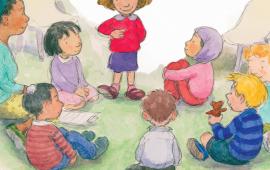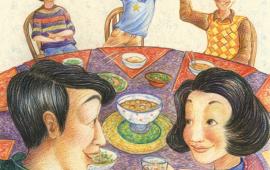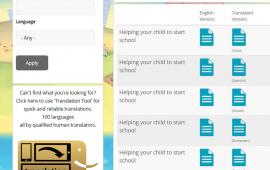EAL: The home language as a practical strength
Welcome back! We want this blog to become a resource for you. It's about sharing links to outstanding work in the field of EAL: academic writing, blog posts, video documentaries, or performance poetry. The references in today’s shorter post give some background to the information and ideas that we’ve been sharing over in our email communications, discussing Mantra Lingua’s eGrammar Tales. If you’ve just navigated your way here and want to know the context, you can sign up for the emails, or check out the tales. You don’t need to though. Please do simply enjoy and explore the links that we’ve put together.
In our first blog post, we introduced the thinking behind the idea that having English as an Additional Language (EAL) can be a strength. We love a series of videos, ‘Teaching Bilinguals (Even if You’re Not One)’ from the other side of the Atlantic, produced by Sarah Vogel. The first video suggests calling EAL students ‘emergent bilinguals’, with all the world advantages that this implies, and recommends looking for ways to ‘leverage’ the home language as a pupil improves their proficiency in English. The second video in the series looks at ways to begin to do that, sometimes very touchingly.
As mentioned in our previous post, the excellent Kamil Trzebiatowski is insistent on the need for not being complacent in your approach, and using a range of tools. Any resource such as the eGrammar Tales, therefore, will be just one part of a teacher’s individual ‘arsenal’ of techniques. Trzebiatowski also happens to be the giver of this detailed talk (with admittedly strange musical choices by the editor) that explains the concept of DARTS (direct activities related to text) rather well. DARTS are fundamental to the eGrammar Tales.
Scaffolding is the other concept that we were discussing. There's an explanation here, with lots of possible examples including ‘encouraging learners to use L1 ability on which to ‘hook’ learning in the additional language’. Hooking, leveraging… the words used are different but the idea is the same: to acknowledge ability in the home language, and then to use it to improve EAL ability. If you need an image of how this works, Mantra Lingua’s eGrammar Tales are a very simple example of it in action.
We find it heartening to know that there is a large community of people who are motivated by the desire to promote excellent English in the context of bilingualism as the goal for EAL pupils.
Related Posts
-
Mind Your Language - A Note On the UN's International Literacy Day 2019
-
Bird Brains And Other Wildlife - The Next RSPB Birdwatch Is Heading Our Way...
-
9 Benefits of Reading to Children
-
And a very merry May Day to you too – some Mayday and Beltane celebrations and traditions
-
The Latest British Council report reveals struggle of language learners in the UK. Can bilingual books help?
-
Breaking The Ice On Your First Day At School
-
Not Everyone Celebrates New Year on 1 January....
-
Ramadan Begins!
-
A new kind of PENfriend – Mantra Lingua’s new digital device to help make sense of the world all around you
-
Do You Speak This Language? The Mantra Lingua L1 Key Terms & Letters Library












